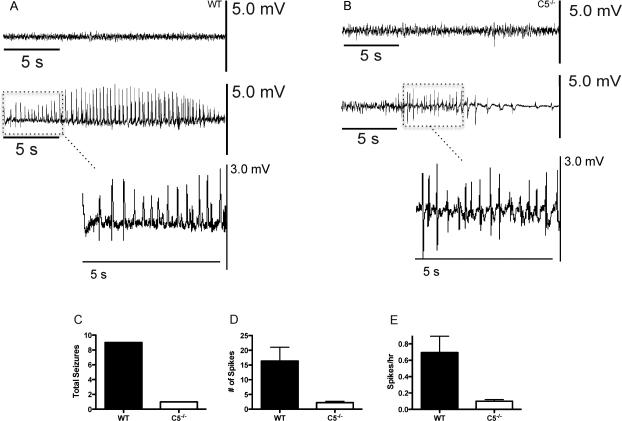Figure 1.
Representative EEG recordings from wild type (A) and C5−/− (B) mice at baseline and at day 5 post-infection with PbA. Baseline recordings for both mouse genotypes are essentially identical (upper recording in each panel). In contrast, PbA-infected wild type mice had recurring and unprovoked abnormal EEG activity for an extended duration (middle tracing, panel A). C5−/− mice frequently presented with a large number of spikes but markedly fewer seizures (middle tracing, panel B). Higher magnification EEG tracings comparing spikes between infected wild type and C5−/− mice are shown in the lower portions of panels A and B, respectively. Wild type mice had markedly more seizures (C), spikes (D) (p=0.012), and number of spikes/hour (E) (p=0.013) compared to C5−/− mice at the peak of clinical disease (n= 7 for both groups). The data shown are pooled from two separate experiments.

